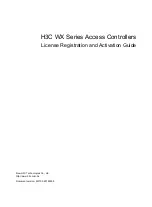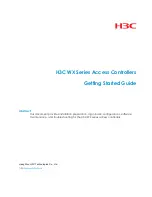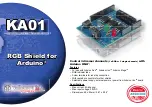
CHAPTER 5: SETTINGS
PRODUCT SETUP
M60 MOTOR PROTECTION SYSTEM – INSTRUCTION MANUAL
5-53
5
The Distributed Network Protocol (DNP) allows for the optimization of control and data acquisition between the equipment
in the substation and the central control center. The protocol is scalable; that is, it is designed to be compatible with the
latest high speed LAN technology yet still be implemented over slower speed serial links.
The DNP improves upon many master-slave protocols by improving overall communication performance requirements
and provides time-stamping with millisecond accuracy.
The M60 supports the Distributed Network Protocol (DNP) version 3.0. DNP is enabled when the
SETTINGS
PRODUCT SETUP
COMMUNICATIONS
PROTOCOL
setting is set to DNP 3.0. The M60 can be used as a DNP slave device connected to
multiple DNP masters (usually an RTU or a SCADA master station). Since the M60 maintains two sets of DNP data change
buffers and connection information, two DNP masters can actively communicate with the M60 at one time.
DNP is not available using the USB port on the graphical front panel.
See the UR Family Communications Guide for more information on DNP.
The DNP Channels sub-menu is shown.
SETTINGS
PRODUCT SETUP
COMMUNICATIONS
DNP PROTOCOL
DNP CHANNELS
The
DNP CHANNEL 1 PORT
and
DNP CHANNEL 2 PORT
settings select the communications port assigned to the DNP protocol
for each channel. Once DNP is assigned to a serial port, DNP is the only protocol running on that port; Modbus or IEC
60870-5-103 are disabled. If DNP is assigned to RS485, the protocol must be set to DNP on the serial port configuration as
well, for the change to take effect. When the
DNP CHANNEL 1(2) PORT
setting is set to “Network - TCP,” the channel 1(2) DNP
protocol can be used over TCP/IP on the Ethernet ports. When this value is set to “Network - UDP,” the DNP protocol can be
used over UDP/IP on channel 1 only. The "Front Panel - RS232" setting does not apply to the graphical front panel; when
selected the DNP client cannot establish a connection on a USB port.
For any change to take effect, restart the relay.
The
DNP ADDRESS
setting is the DNP slave address. This number identifies the M60 on a DNP communications link. Assign a
unique address to each DNP slave.
The M60 can specify a maximum of five clients for its DNP connections. These are IP addresses for the controllers to which
the M60 can connect. The settings follow.
DNP OBJECT 23
DEFAULT VARIATION: 1
Range: 1, 2, 5, 6
DNP OBJECT 30
DEFAULT VARIATION: 1
Range: 1, 2, 3, 4, 5
DNP OBJECT 32
DEFAULT VARIATION: 1
Range: 1, 2, 3, 4, 5, 7
DNP NUMBER OF PAIRED
CONTROL POINTS: 0
Range: 0 to 32 in steps of 1
DNP TCP CONNECTION
TIMEOUT: 120 s
Range: 10 to 7200 s in steps of 1
DNP EVENT TIME BASE:
LOCAL
Range: UTC, LOCAL
DNP CHANNELS
DNP CHANNEL 1 PORT:
NONE
Range: NONE, COM1 - RS485, COM2 - RS485, FRONT
PANEL - RS232, NETWORK - TCP, NETWORK - UDP
DNP CHANNEL 2 PORT:
NONE
Range: NONE, COM1 - RS485, COM2 - RS485, FRONT
PANEL - RS232, NETWORK - TCP
Do not set more than one protocol to the same TCP/UDP port number, as this results in unreliable operation of
those protocols.
Summary of Contents for M60
Page 9: ...TABLE OF CONTENTS M60 MOTOR PROTECTION SYSTEM INSTRUCTION MANUAL ix INDEX ...
Page 10: ...x M60 MOTOR PROTECTION SYSTEM INSTRUCTION MANUAL TABLE OF CONTENTS ...
Page 552: ...5 344 M60 MOTOR PROTECTION SYSTEM INSTRUCTION MANUAL TESTING CHAPTER 5 SETTINGS 5 ...
Page 660: ...iv M60 MOTOR PROTECTION SYSTEM INSTRUCTION MANUAL ABBREVIATIONS ...
















































